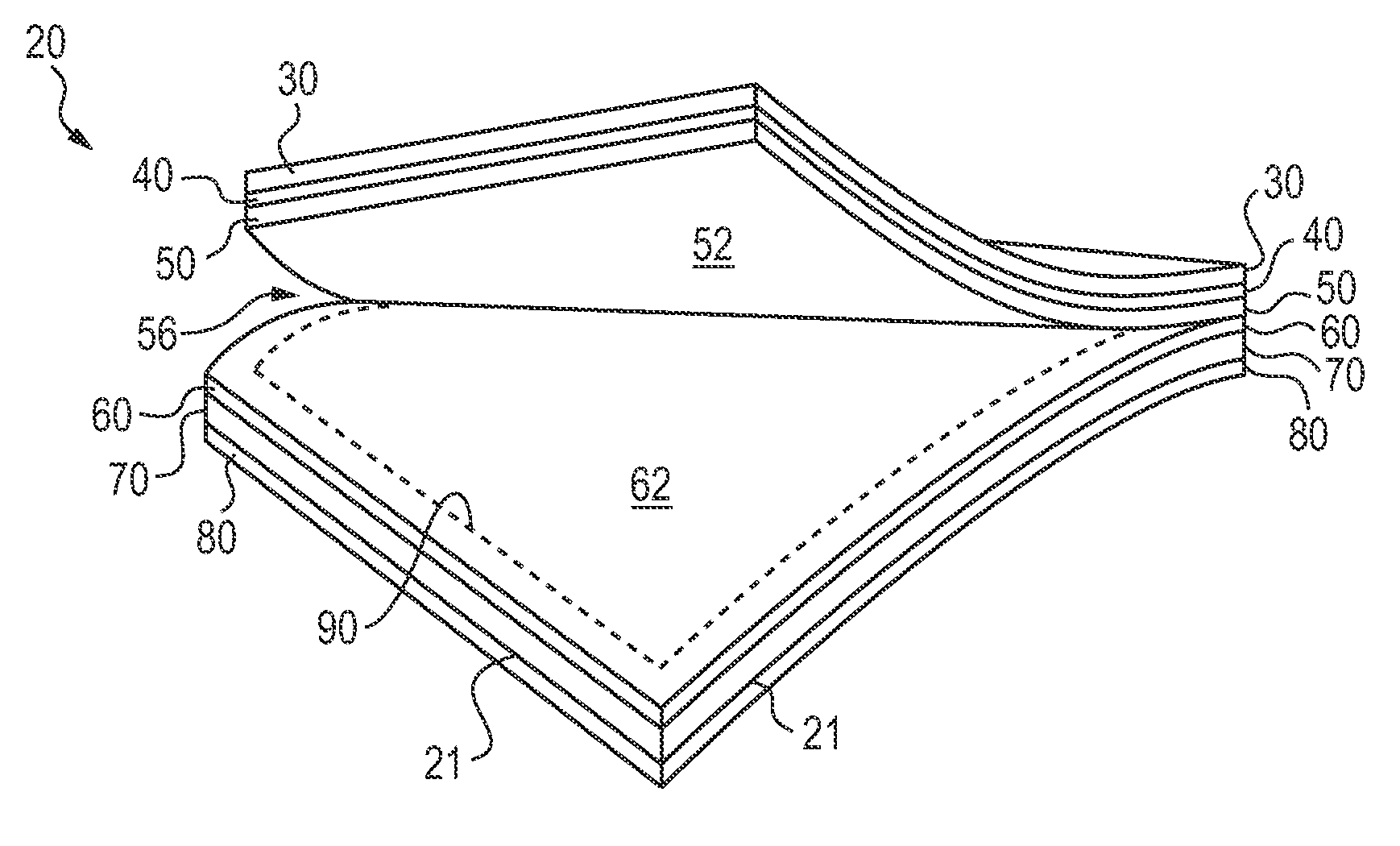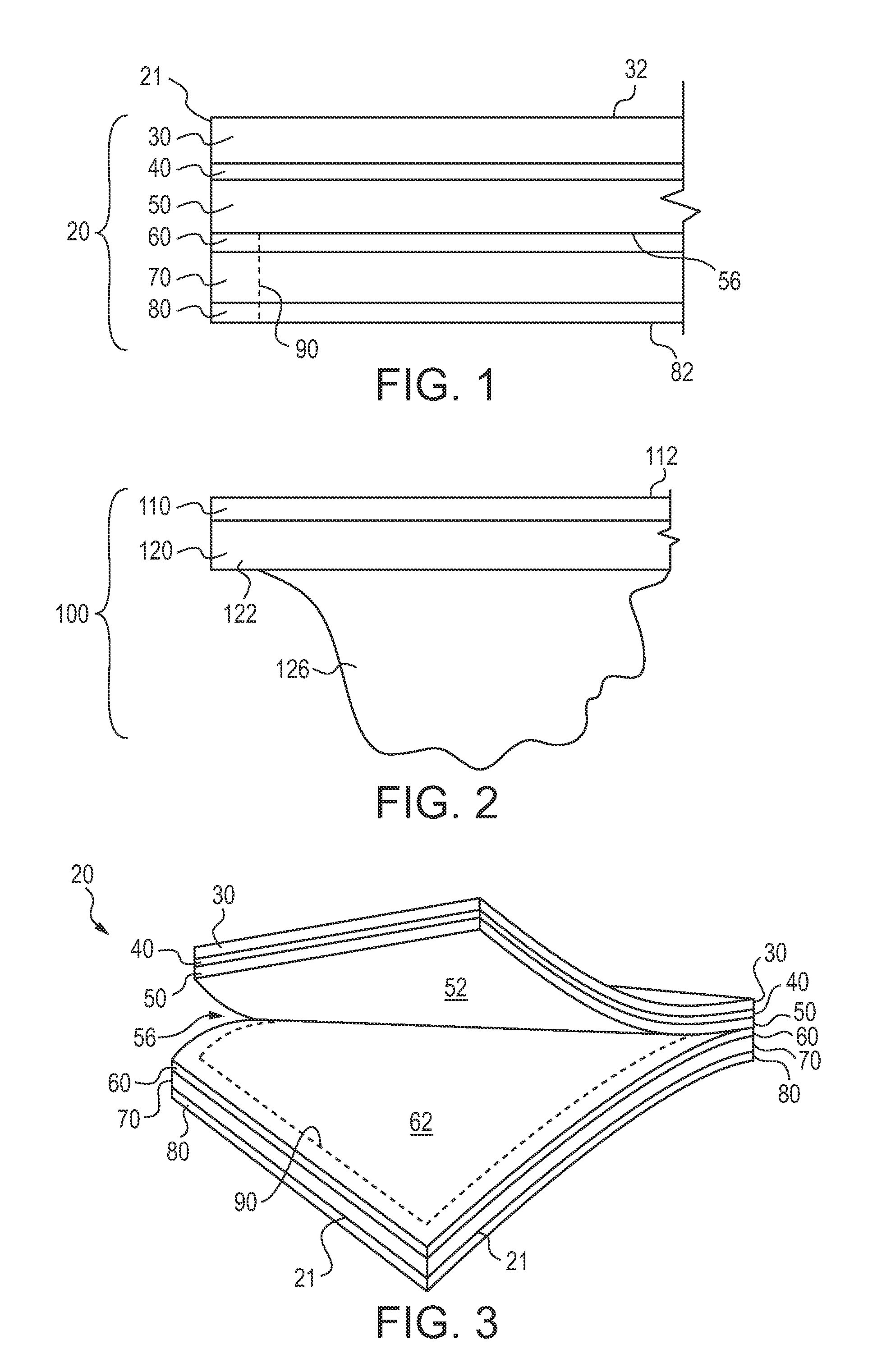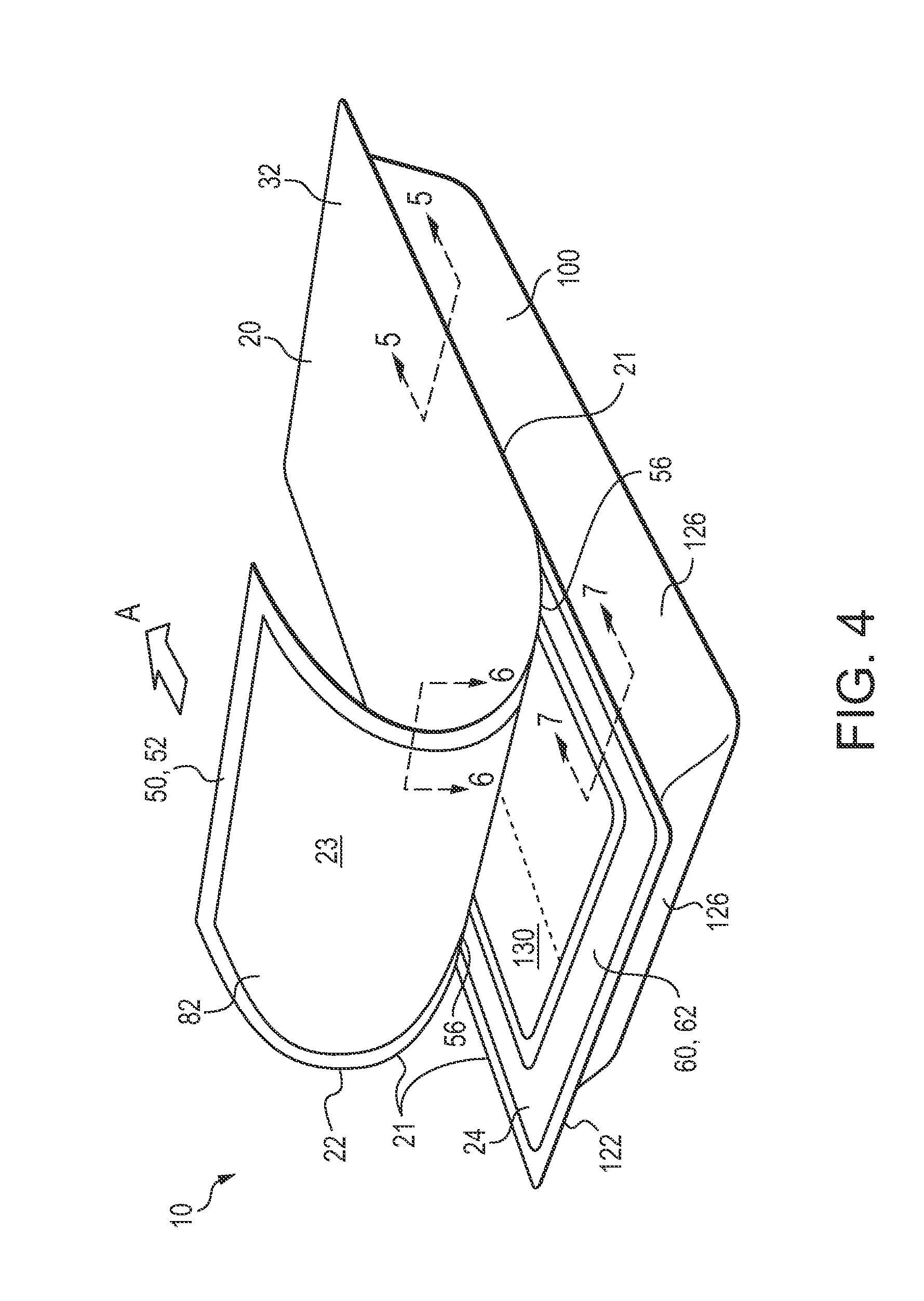Resealable Laminate For Heat Sealed Packaging
a heat sealing and laminate technology, applied in the direction of caps, liquid handling, closures using stoppers, etc., can solve the problems of several limitations, package assemblies such as those disclosed, and are generally not able to effectively and reliably perform sealing
- Summary
- Abstract
- Description
- Claims
- Application Information
AI Technical Summary
Benefits of technology
Problems solved by technology
Method used
Image
Examples
example 1
[0089]In a first series of investigations, peel tests were conducted in which the adhesive force of a preferred pressure sensitive adhesive, the previously noted Fasson® S692N, was measured relative to different substrates. Four different substrates were evaluated, glass, high density polyethylene (HDPE), polyethylene terephthalate (PET), and polypropylene (PP). The adhesive was applied to the respective substrates, at varying adhesive coat weights. The peel strength of the adhesive from the substrate was then measured. FIG. 9 illustrates peel strength values (in N / in) measured for each of the substrates containing varying amounts of the preferred adhesive (in gsm). As will be appreciated as the coating weight increased, the peel strength increased.
example 2
[0090]In another series of investigations, loop tack of the preferred adhesive Fasson® S692N was measured in regard to the previously noted four substrates, glass, HDPE, PET and PP. FIG. 10 illustrates loop tack values (in N / in) measured for each of the substrates containing varying amounts of the adhesive (in gsm). As the coating weight increased, the loop tack increased.
[0091]As previously explained, differences in peel strength and loop tack between opposing faces of the pressure sensitive adhesive in the cover laminates can be utilized to achieve desired behavior of the cover upon separation and resealing characteristics. FIGS. 9 and 10 reveal that coating weight or thickness of the pressure sensitive adhesive in the cover laminate can also affect the peel strength and loop tack characteristics between the adhesive and each of the layers disposed immediately adjacent to the adhesive layer.
[0092]Additional details as to various components, manufacturing aspects, and construction ...
PUM
| Property | Measurement | Unit |
|---|---|---|
| temperature | aaaaa | aaaaa |
| thickness | aaaaa | aaaaa |
| thickness | aaaaa | aaaaa |
Abstract
Description
Claims
Application Information
 Login to View More
Login to View More - R&D
- Intellectual Property
- Life Sciences
- Materials
- Tech Scout
- Unparalleled Data Quality
- Higher Quality Content
- 60% Fewer Hallucinations
Browse by: Latest US Patents, China's latest patents, Technical Efficacy Thesaurus, Application Domain, Technology Topic, Popular Technical Reports.
© 2025 PatSnap. All rights reserved.Legal|Privacy policy|Modern Slavery Act Transparency Statement|Sitemap|About US| Contact US: help@patsnap.com



